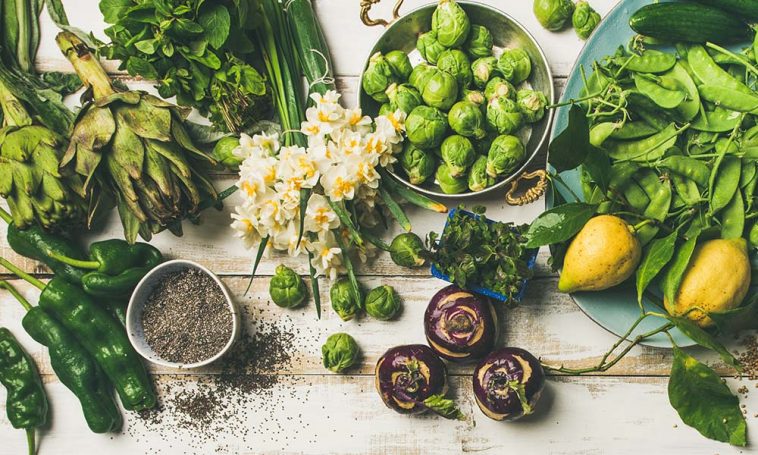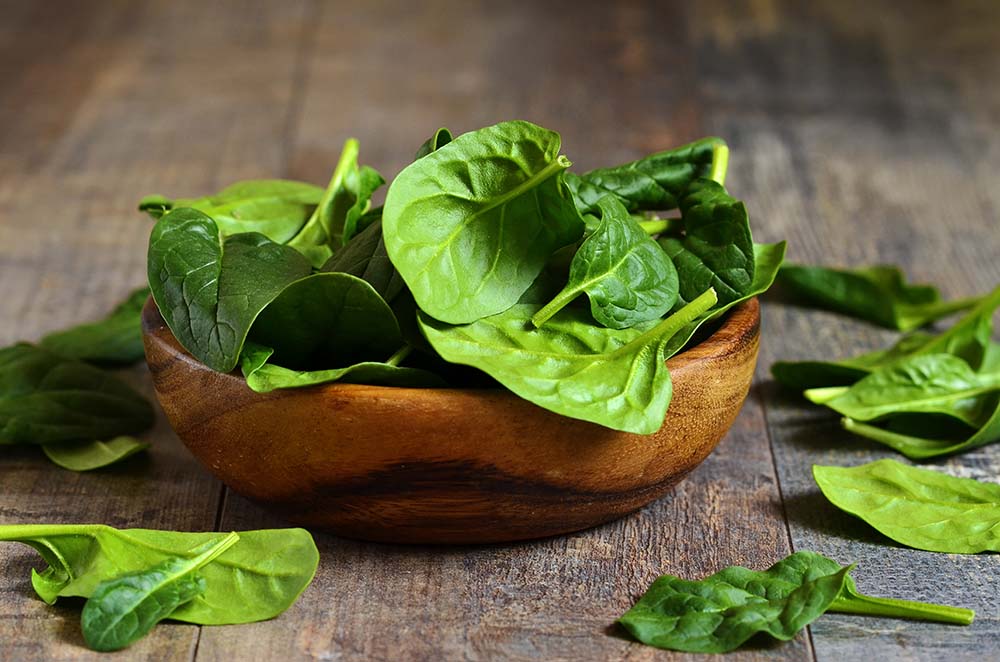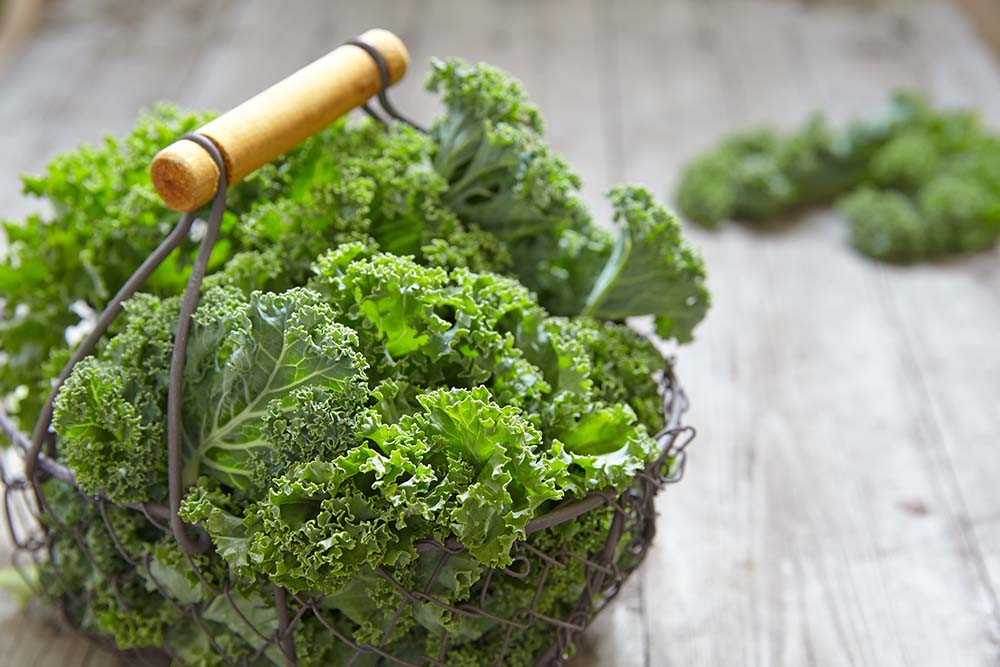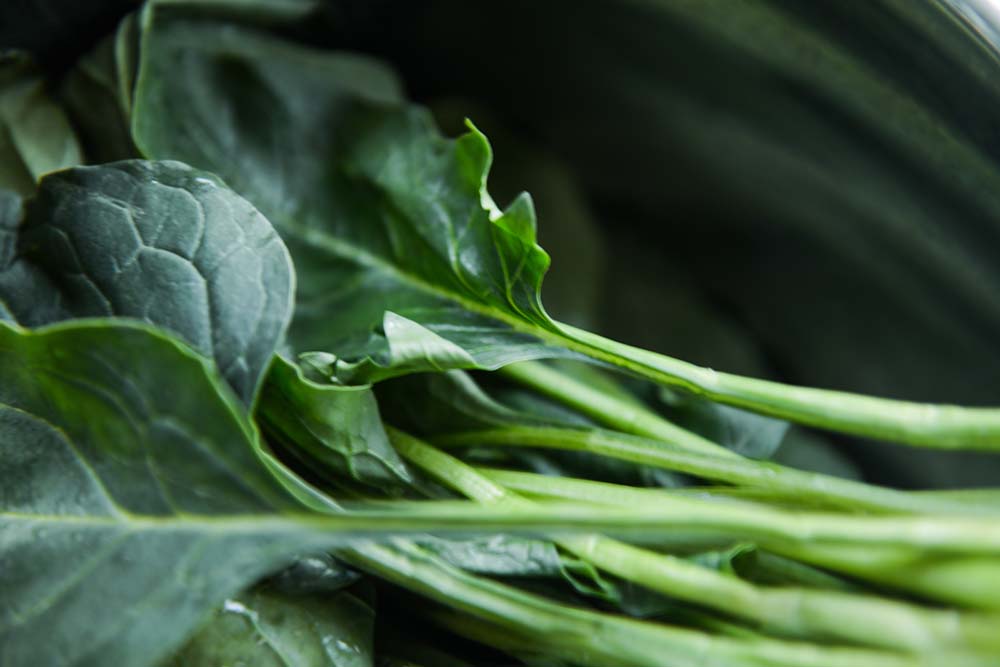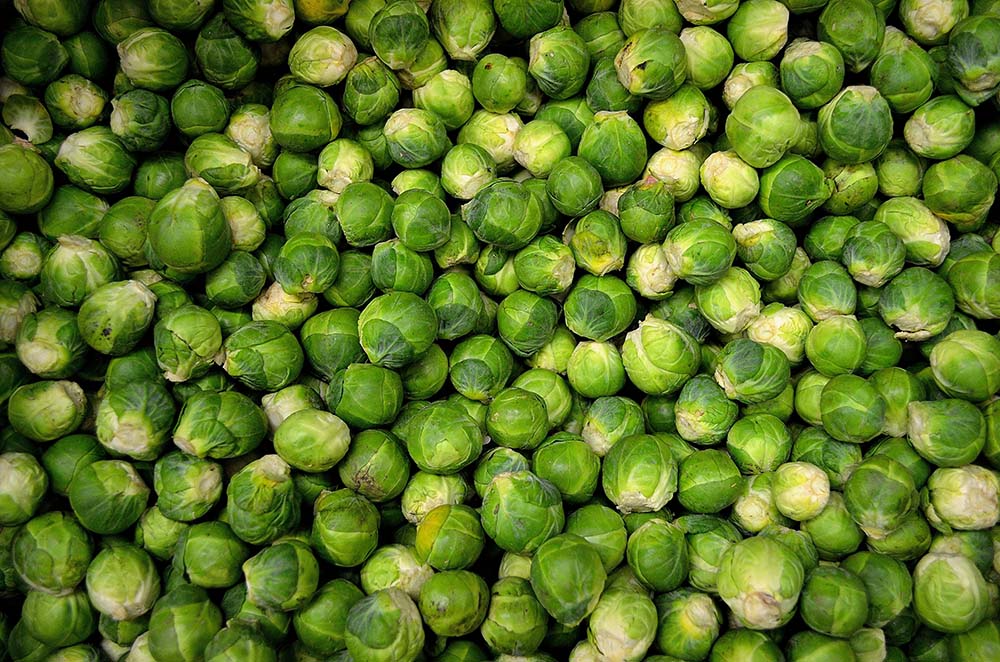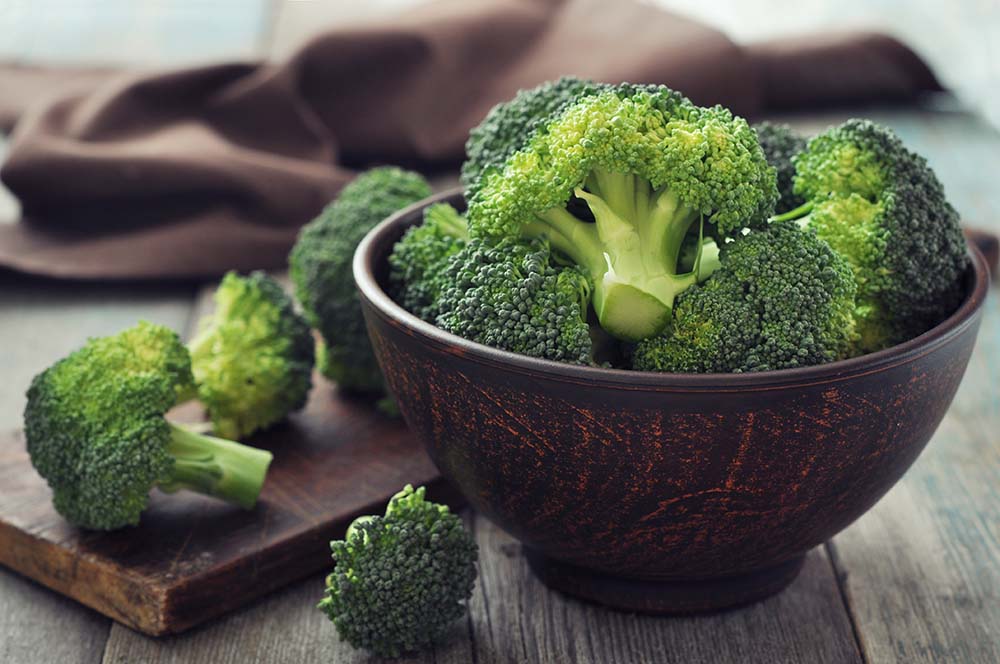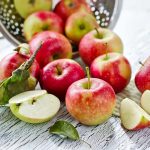Well, okay… maybe not fifty shades, just however many happen to be contained in Spinach, Kale, Swiss Chard, Collard Greens, Brussel Sprouts and Broccoli. Then again… science does tell us that the human eye can see more shades of green than any other colour… so standby on that thought.
Until then, let’s dive into the world of delicious, deep greens. Curly, crisp, garden-fresh, raw, natural sweets of the earth. Mother Nature’s miracles; clean and healthy glowing glorious greens!
Oh Spinach, how I love thee. So sweet and fresh! You can steam it, stew it, cook it and brew it. As versatile as they come! Spinach works well in soups, salads, smoothies, sauces, stir-fries and one hundred and one other outstanding dishes. It is low in calories and high in nutrients – the ultimate power couple combination! Spinach comes packed with Vitamins A and K, as well as manganese. It also happens to be an excellent source of iron – which is very good news for anyone with an iron deficiency. And FYI, Spinach has a wealth of antioxidants, including betacarotene and lutein, which studies show may help decrease risk of cancer, be beneficial for your heart health and lower your blood pressure. To top it all off, these leaves are full of folate, which plays a major roll in red blood cell production and making and repairing DNA. Spinach is a superfood that helps keep us moving and grooving. Healthy and delicious, this is a green that MUST go on your plate.
All Hail Kale! This mighty green leaf is a power force filled with nutrients and antioxidants! In fact, it is one of THE MOST nutrient dense foods on planet Earth. Just one cup of Kale provides you with an overflow of Vitamins A, C, K and B-6. It also has plenty of copper, calcium and potassium (try saying that five times fast). Its dark curly leaves are abundant in antioxidants, which studies show may help with your heart health. Consuming Kale may help to increase your HDL (aka, High Density Lipoprotein) Cholesterol as well. Fret not, this is the good kind of cholesterol! It helps to carry cholesterol from your arteries to your liver where it can be excreted – side note, studies reveal that high levels of HDL may be linked to reduced risks of heart disease and may reduce your blood pressure. As you can see, there are so many reasons to love this leaf! To reap the full rewards of this super great super green, eat it raw – as cooking Kale can reduce its nutrient profile.
Swiss Chard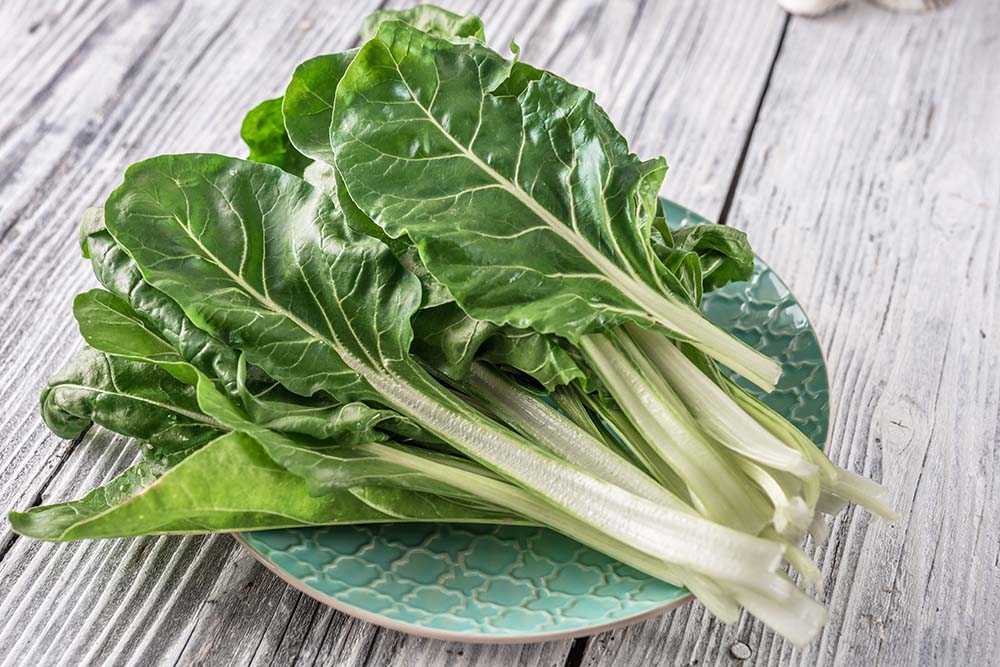 Swiss. Not chocolate, but Chard. Dark rich green, Chard. Often seen in Mediterranean cuisine, this earthy, tender, crunchy vegetable is low in calories and high in vitamins and nutrients. It has fibre, it has protein, heck it even has iron. And lots and lots of Vitamins: A, K, C, and a little bit of B. Its resume also includes a dash of manganese and a pinch of magnesium. But those aren’t its selling points. The real winner, is that Swiss Chard may protect against the negative effects of diabetes and may decrease blood sugar levels. Its powerful antioxidants may help to protect your liver and kidneys from the damage of diabetes. One study found that Swiss Chard reversed effects of diabetes by decreasing blood sugar levels and preventing cell damage from disease causing free radicals. It’s easy to see why they call it a superfood.
Swiss. Not chocolate, but Chard. Dark rich green, Chard. Often seen in Mediterranean cuisine, this earthy, tender, crunchy vegetable is low in calories and high in vitamins and nutrients. It has fibre, it has protein, heck it even has iron. And lots and lots of Vitamins: A, K, C, and a little bit of B. Its resume also includes a dash of manganese and a pinch of magnesium. But those aren’t its selling points. The real winner, is that Swiss Chard may protect against the negative effects of diabetes and may decrease blood sugar levels. Its powerful antioxidants may help to protect your liver and kidneys from the damage of diabetes. One study found that Swiss Chard reversed effects of diabetes by decreasing blood sugar levels and preventing cell damage from disease causing free radicals. It’s easy to see why they call it a superfood.
Deep dark lean Collard Greens. Very nutrient rich indeed! These pretty little plants pack a punch; protein, fibre, and plenty of calcium! Collard Greens happen to be one of the best plant-based sources of calcium there is, they even top Spinach and Kale on the list of calcium kings. These high levels of calcium help promote bone health and may reduce the risk of osteoporosis. But this plant is not a one show pony; Collard Greens also come with a high supply of antioxidants, which may of course, help decrease you risk of various diseases and illnesses.
Bring on the Brussel Sprouts! These bundles of layered leaves contain kaempferol – a tad difficult to pronounce, but totally divine for your body – it’s an antioxidant that may help prevent cell damage, and protect against free radicals. Eating Brussel Sprouts may also lead to an increase in enzymes that control and enhance detoxification in our bodies (this means cleansing the blood in our livers to remove toxins from the kidneys, lungs, intestines and skin, which overall improves the circulation of blood, and refuels our bodies with nutrients). Speaking of nutrients, Brussel Sprouts have plenty, including and not limited to: Vitamin A, Vitamin K, Vitamin C, Vitamin B, folate, manganese, fibre, potassium and even protein. They may be small, but nutrition wise, these itty bitty buds are gargantuan.
Beautiful, beautiful Broccoli. The flower of the vegetable garden. Tiny tree, or bountiful bush of blossoming buds? Either way, this veggie is just jammed with Vitamins K, C, A and B. Not to mention good amounts of folate, manganese, potassium and fiber. Studies also show that Broccoli is rich in a sulfur containing plant compound known as glucosinolate and sulforaphane, which may help protect against cancer. Broccoli also happens to be a source of calcium and protein. So sauté, steam, boil or bake; Broccoli has a deliciously sweet savoury flavour when cooked, and an earthy almost bitter taste when raw. Both ways it is delicious and oh so very nutritious.
There you have it; the facts are in! Now go grab a fork and eat your greens!

